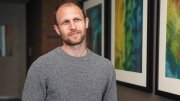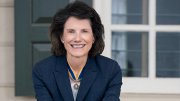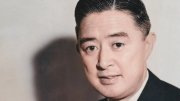Harvard certainly knows how to mark significant milestones. At the end of this academic year, the University had suitable reasons to throw not one but two grand parties. The celebratory hoopla for the beyond-expectations success of the University Campaign consumed the weekend of May 12 and 13, and the Commencement extravaganza culminated on June 8. Neil L. Rudenstine's announcement on May 22 that he would make the next academic year "my last as president of Harvard," concluding his service on June 30, 2001 (see page 74), made both the occasions especially momentous.
The two formal events, taken together, give a fair view of fair Harvard's purposes and prospects today. The campaign festivities, held exactly six years from the public kickoff (brazenly scheduled on Friday the thirteenth of May 1994), were mostly about giving thanks. With $2.6 billion contributed, there were many well-earned thanks to give. For President Rudenstine's perspectives, see page 44. But the weekend also surveyed and previewed the intellectual concerns at the center of the University's purpose. A baker's dozen plus one academic panels explored the economy, education, and entrepreneurship; medicine and public health; the research university (about which our next issue will have much more to say) and religion; technological transformations and the transforming power of art; and more. Brief summaries appear beginning on page 50.
The principal Commencement guests also neatly embodied the University's achievements and aims (see pages 67 and 72). Amartya K. Sen, Nobel laureate in economics, is renowned for analyses of social-choice theory and welfare economics--but also for his work on famine, poverty, and the underpinnings of democracy, freedom, and human rights. Farther afield, he has written to great effect on the poetry of Rabindranath Tagore. Similarly, Seamus Heaney, poet and Nobelist in literature (and, remarkably, a transatlantic bestseller for his translation of Beowulf), is well known for applying his artistry to the political tragedies of his native Northern Ireland. The speakers' breadth and mastery seem, fittingly, to symbolize the University's scope and aspirations during Rudenstine's tenure. That both men choose to retain some Harvard affiliation, though they now principally work elsewhere, only underscores the point.
The presence of Sen and Heaney also recalls us to the world beyond Cambridge. Having observed brutal wars, Divinity School alumnus Chris Hedges finds a way back to humanity through great works of literature (page 58). Jorge I. Domínguez, a Harvard political scientist, questions America's relations with Cuba (page 35). Concerns about contemporary civic life raised by Robert D. Putnam, another Harvard social scientist, are analyzed on page 25. And the brief life of Ken Miyata (page 56) reminds us of the worthy pursuit of life's pleasures.
~ John S. Rosenberg





